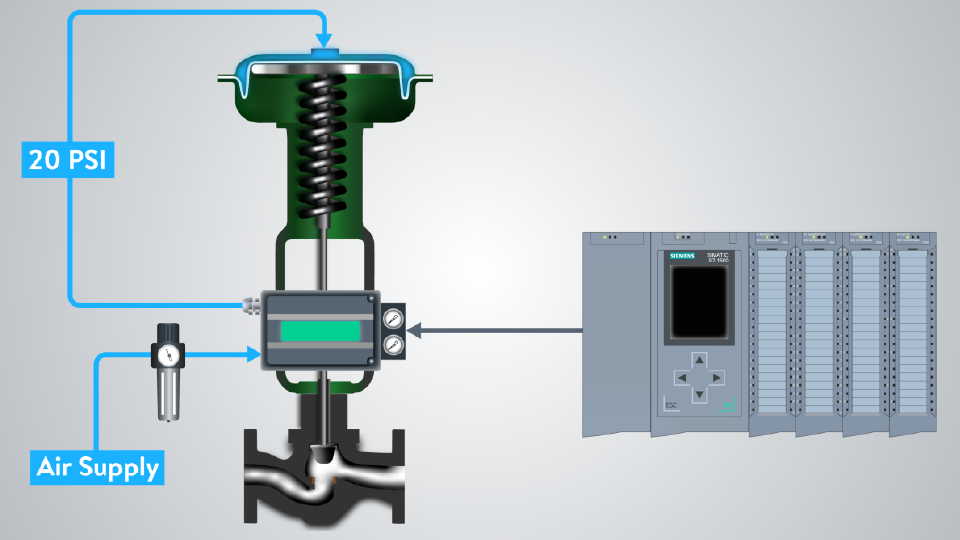Maximizing System Control with High-Performance Control Valves
Maximizing System Control with High-Performance Control Valves
Blog Article

Maximize Energy Cost Savings and Comfort With Advanced Building Automation Controls
In the realm of contemporary style and center administration, the assimilation of sophisticated structure automation controls stands as an essential innovation. By harnessing the power of automation, buildings can adjust, react, and progress in ways that were as soon as unbelievable.
Power Effectiveness Perks
Energy effectiveness advantages can dramatically lower power usage and operational costs in structures. Energy-efficient systems, such as sophisticated building automation controls, can maximize the usage of resources like heating, cooling, and lights, leading to lower energy expenditures over time.
In addition, improved energy efficiency can lengthen the life expectancy of building devices and systems. By operating more successfully, heating and cooling systems, light, and other structure elements experience much less deterioration, resulting in decreased upkeep and replacement expenses. Furthermore, energy-efficient buildings usually regulate higher property worths and rental prices, giving lasting monetary advantages to proprietors.
Moreover, power effectiveness can enhance occupant comfort and efficiency. Properly managed interior settings with optimal lights and thermal conditions create an even more enjoyable and conducive workspace, causing boosted employee satisfaction and efficiency. Generally, the energy efficiency advantages linked with advanced structure automation controls are multifaceted, encompassing expense savings, ecological stewardship, and occupant health.
Boosted Convenience Control
Enhancing comfort control in structure environments requires a sophisticated assimilation of innovative automation systems for optimum passenger well-being. By utilizing innovative building automation controls, centers can tailor the interior atmosphere to fulfill the certain needs and choices of residents. control valves.
By incorporating these innovative controls, structures can not just enhance comfort however additionally enhance energy effectiveness by maximizing system procedures based on actual occupancy and use patterns. Ultimately, focusing on occupant convenience through innovative automation systems leads to a much more satisfying and much healthier interior setting.
Operational Efficiency Improvements

Furthermore, the application of real-time monitoring and analytics tools allows structure operators to determine energy ineffectiveness and operational abnormalities quickly. By continually keeping track of power use patterns and system performance metrics, modifications can be made in real-time to optimize energy intake and make sure peak functional performance. control valves. In addition, incorporating need action strategies right into building automation controls can even more improve functional efficiency by dynamically changing power usage based on grid problems and prices signals
Indoor Environment Optimization
Effective indoor environment optimization is an essential element of structure automation controls, making sure residents' comfort and well-being while making best use of energy cost savings. By utilizing sophisticated sensing units and controls, building automation systems can continuously keep an eye on and readjust temperature level, moisture levels, air top quality, and air flow to create an optimal indoor setting. Keeping constant and comfy problems not only improves resident satisfaction yet likewise increases performance and total well-being.
Indoor climate optimization also plays an essential duty in energy performance. By fine-tuning heating, cooling, and air flow systems based upon real-time data and occupancy patterns, developing automation controls can dramatically reduce power usage - control valves. Carrying out methods such as demand-controlled air flow and thermal zoning can aid lessen power waste while making certain that each area of the structure gets the necessary conditioning.

Sustainable Setting Development
Building automation controls not only maximize indoor environment conditions for power performance and owner comfort yet additionally lay the foundation for developing a lasting environment via calculated management of sources and systems. By integrating innovative building automation technologies, such as sensing units, actuators, and intelligent software application, centers can monitor and readjust energy use in real-time to minimize waste and minimize their carbon footprint. These systems make it possible for predictive maintenance, determining potential problems before they intensify and maximizing equipment efficiency to enhance durability and effectiveness.
Furthermore, Check Out Your URL sustainable setting creation expands past energy management to include water conservation, waste decrease, and indoor air top quality renovation. Structure automation controls can manage water use, identify leaks, and guarantee appropriate waste disposal methods, contributing to general you can try these out sustainability efforts. Furthermore, by checking and managing ventilation and filtration systems, these technologies improve passenger wellness and performance while lowering power usage connected with HVAC procedures.
Verdict
To conclude, progressed building automation manages offer considerable advantages in regards to power cost savings, comfort control, functional effectiveness, interior climate optimization, and creating a lasting setting. By applying these controls, structures can accomplish optimal performance while lowering power consumption and improving passenger comfort. It appears that making use of innovative automation innovation is vital in boosting building performance and creating an extra sustainable future.
Energy effectiveness benefits can substantially minimize power usage and functional prices in buildings. Overall, the energy effectiveness advantages associated with advanced building automation controls are multifaceted, incorporating price savings, ecological stewardship, and owner health.
Additionally, integrating demand response strategies right into structure automation controls can better improve operational efficiency useful site by dynamically adjusting power usage based on grid conditions and rates signals.
Structure automation regulates not just optimize interior climate problems for energy efficiency and resident comfort however also lay the structure for developing a lasting atmosphere with critical monitoring of systems and sources.In verdict, progressed building automation manages offer considerable advantages in terms of energy cost savings, convenience control, operational effectiveness, indoor environment optimization, and developing a lasting environment.
Report this page